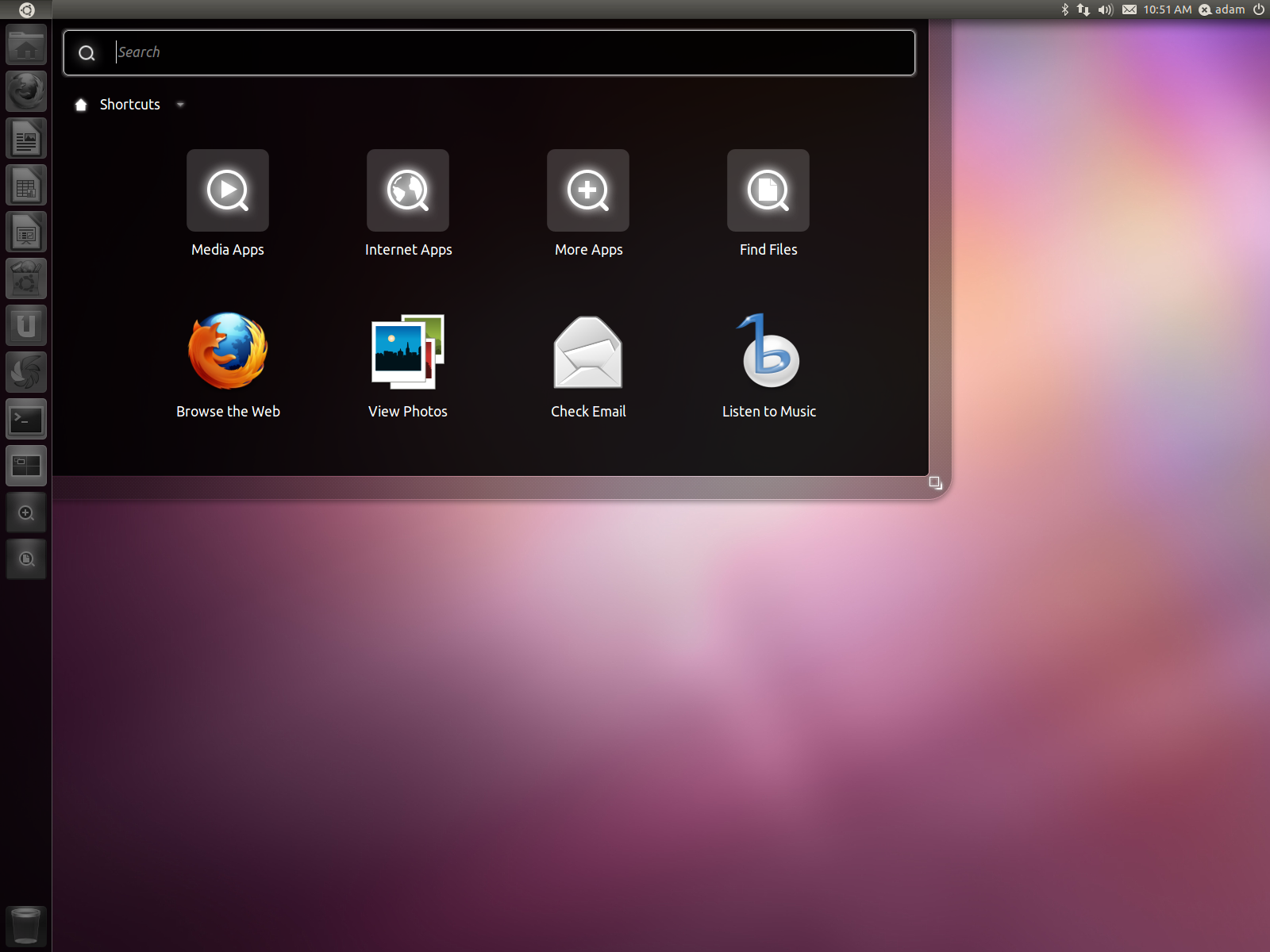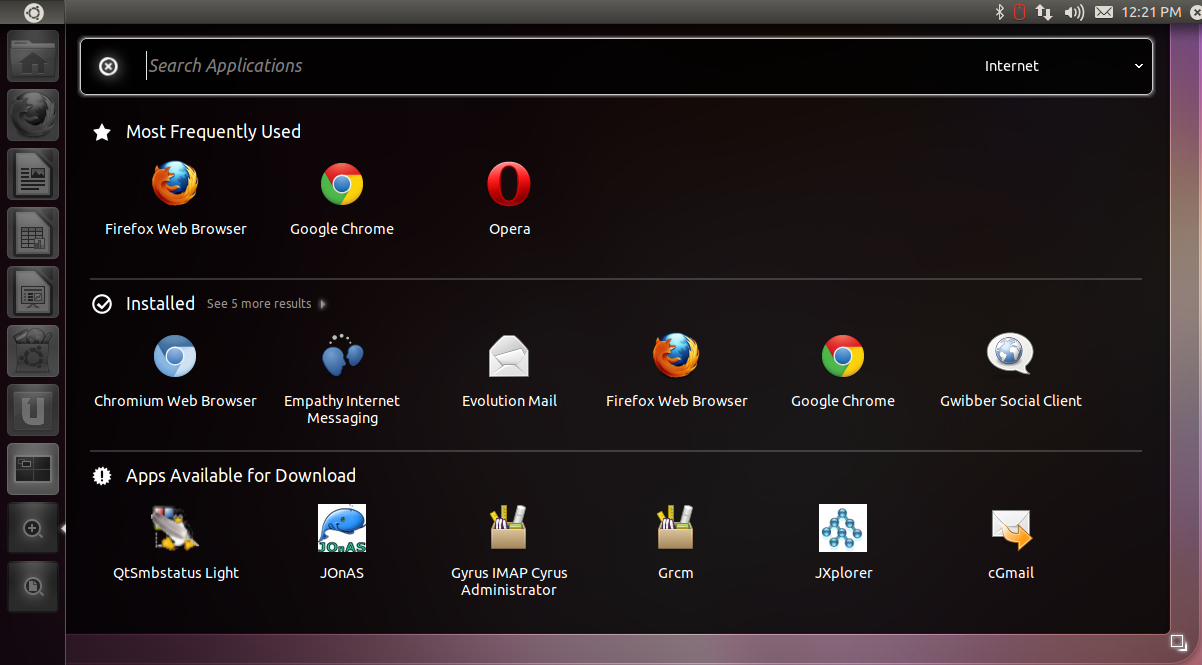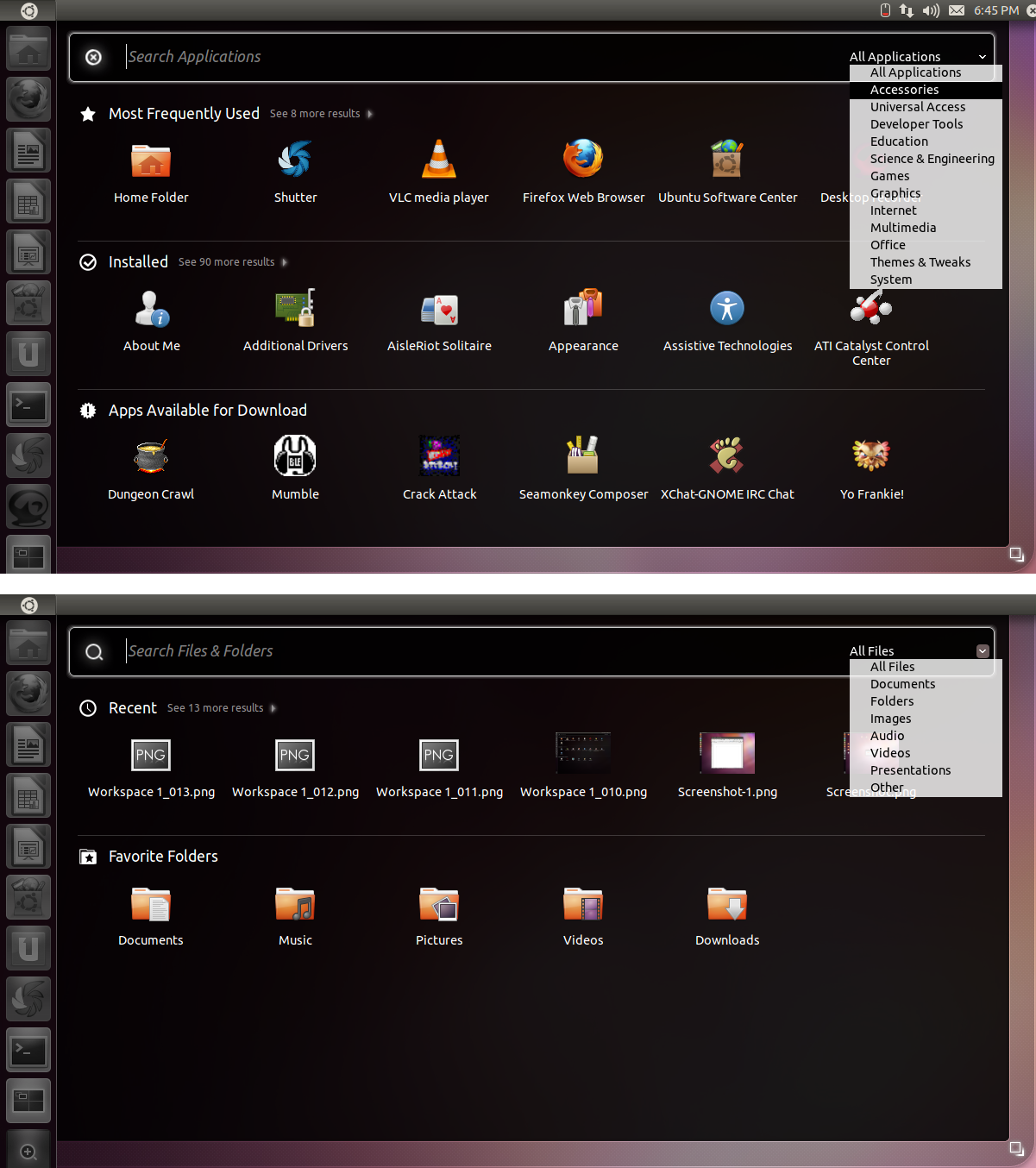Ubuntu 11.04 (Natty Narwhal), Reviewed In Depth
Ubuntu 11.04 (Natty Narwhal) has arrived, and we have the scoop on everything you need to know about Canonical's latest Linux, along with the usual review and benchmarks. Is this the change we've been waiting for, or is the Natty Narwhal a fail whale?
Dash
Dash, short for dashboard, is the new Ubuntu Start menu. Clicking the Ubuntu logo in the upper left-hand corner of the screen activates Dash. Instead of a simple drop-down or pop-up menu like you see in most operating systems, Ubuntu's Dash is more of an overlay. When Dash is activated, the Launcher locks into place, goes dark, and a translucent dashboard takes up much of the screen.
Dash can be expanded to fill the entire screen by clicking the arrow in the bottom-right corner of the Dash overlay. Dash automatically opens in full view on netbook and (presumably) tablet-sized screens.
Before we explain the components of Dash and exactly how they work, let's take at look at Dash in action.
The first and most prominent item on the Dash home screen is a contextual search box. This can be used to search for applications, files, and folders. Entire words or phrases do not need to be entered; as soon as a single letter is entered into the search box, real-time results begin to populate Dash. Search is provided by Zeitgeist, which semantically catalogs files, folders, and apps according to how often each is accessed.
Unlike the Windows Start Menu, the Applications/Places/System menu from previous versions of Ubuntu, and KDE's Kicker, Dash does not immediately provide a categorized listing of all applications. Instead, the Dash home screen contains shortcuts to Media Apps, Internet Apps, More Apps (all apps), and Find Files. Clicking any of the shortcuts doesn't immediately provide a full listing of applications either. After a selection is made, the user is presented with a three-paned screen of relevant options. For Media Apps, Internet Apps, and More Apps, the sections are Most Frequently Used, Installed, and Apps Available for Download. If there are more entries than can fit in each section, the option to see more appears.
The Most Frequently Used section displays the currently installed applications used most often. As with the search function, Zeitgeist is used to populate the Most Frequently Used section. The Installed section alphabetically lists all the applications in the selected shortcut. The Available for Download section is made possible through the integration of Dash with the Ubuntu Software Center. Applications relevant to the selected category are displayed there; clicking any of them opens the Ubuntu Software Center for installation.
The Find Files shortcut has sections for Recent, Downloads, and Favorite Folders. Recent shows recently-accessed files, Downloads shows the contents of the Downloads folder in the Home directory, and Favorite Folders shows the bookmarked folders from the Nautilus left-hand pane (or the Places global menu of the Desktop).
Get Tom's Hardware's best news and in-depth reviews, straight to your inbox.
Back on the Dash home screen, quick launchers for a handful of default applications appear underneath the shortcuts. The quick launchers correspond to the default Web browser, photo manager, email client, and music manager. These applications can be changed via the new System Settings/Control Center (covered earlier).
Alternatively, a more traditional categorized listing of applications and places is found within Dash. This option appears in the far-right end of the search box after a shortcut is selected from the Dash home screen.
-
jryan388 One problem I faced with the standard unity desktop is the horrible performance even on my Athlon II @ 3.6 and Radeon 5750. I upgraded on launch day, so maybe canonical fixed it by now, but the performance was absolutely abysmal. The easiest fix is the unity-2d package. Great performance, doesn't look any worse.Reply -
-Fran- 11.04 sucks; plain and simple.Reply
Power users can do little to nothing to fix things between gnome3 and the buggy Unity.
I wouldn't even bother with 11.04 when 10.04 is rock solid.
Cheers! -
davewolfgang I tried the upgrade, but unity is blech. I am still using the upgrade, but doing the classic.Reply
But I may go back to 10.10 for my EeePC. -
adamovera jryan388One problem I faced with the standard unity desktop is the horrible performance even on my Athlon II @ 3.6 and Radeon 5750. I upgraded on launch day, so maybe canonical fixed it by now, but the performance was absolutely abysmal. The easiest fix is the unity-2d package. Great performance, doesn't look any worse.Wow, that isn't right, the old X2 test system which has a considerably older Nvidia card runs it great. What's the full specs?Reply -
adamovera ksa-_-jedU should add more distros to the benchmarks like Debian, Fedora, and open SUSE.Fedora 15/GNOME 3 coming up next. I have never had any luck whatsoever with openSUSE, will keep trying new versions as they come out though.Reply -
bellman80 I tried 11.04. Unity was more annoying than useful. I installed the new Linux Mint instead, I'm a happy camper now.Reply -
Tamz_msc I'm going to stick with 10.04, because it has been running rock-solid without a glitch for almost a year. It was able to find drivers for my on-board audio which even Windows 7 could not find.Reply
Unity is not my cup of tea., though I'm looking forward to GNOME 3.0.
Till then Lucid Lynx FTW! -
RogueKitsune Unity is a nice idea, but not my cup of tea. Overall I am happy with the changes in 11.04. Right now i have my laptop(AMD Turion x2, radeon x1200)running it with no problems(everything worked out of the box)Reply



